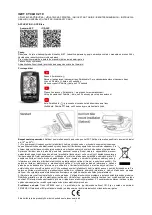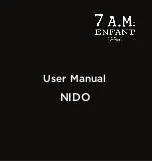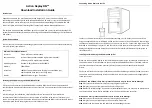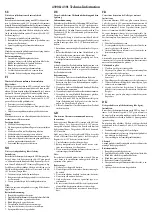
Device / Select EPROM /Flash by ID
Use this command for autoselect an EPROM or Flash as active device by reading the device
ID. The programmer can automatically identify certain devices by the reading the
manufacturer and the device-ID that are burnt into the chip. This only applies to EPROM or
Flash that supports this feature. If the device does not support a chip ID and manufacturer's
ID, a message will be displayed indicating this as an unknown or not supported device.
If more devices with identical chip ID and manufacturer's ID were detected, the list of these
devices will be displayed. A corresponding device can be chosen from this list by selecting its
number (or manufacturer name) from list and press
<Enter>
(or click
OK
button). Press a key
<Esc>
or click
Cancel
button at any time to cancel device selection without affecting the
currently selected device.
Warning: The control program only support this time EPROM’s and Flash with 28 and 32
pins. Any of programmers determines pins number automatically. For other programmers you
must enter this number manually.
The programmer applies a high voltage to the appropriate pins on the socket. This is
necessary to enable the system to read the device ID. Do not insert into the socket a device
that is not an EPROM or Flash. It may be damaged when the programmer applies the high
voltage.
We don't recommend apply this command to 2764 and 27128 EPROM types, because most
of them ID not supports.
Device / Device options
All settings of this menu are used for programming process, serialization and associated file
control.
Device / Device options / Operation options
All settings of this command are used for programming process control. This is a flexible
environment, which content items associated with current device and programmer type.
Items, which are valid for the current device but aren't supported by current programmer, are
disabled. These settings are saving to disk along with associated device by
File / Exit and
save
command.
The commonly used term are also explained in the user's manual to programmer. The special
terms used here are exactly the terms used by manufacturer of respective chip. Please read
the documentation to the chip you want to program for explanation of all used terms.
List of commonly used items:
group
Addresses
:
device start address (default 0)
device end address (default device size-1)
buffer start address (default 0)
Split
(default none)
This option allows to set special mode of buffer when programming or reading device. Using
split options is particularly useful when using 8-bit data memory devices in 16-bit or 32-bit
applications.
83
Summary of Contents for 844USB
Page 7: ...Introduction 7 ...
Page 12: ...Quick Start 12 ...
Page 15: ...Detailed description 15 ...
Page 16: ...859 16 ...
Page 28: ...866B 28 ...
Page 41: ...844USB 41 ...
Page 50: ...848A 50 ...
Page 56: ...Setup 56 ...
Page 67: ...Pg4uw 67 ...
Page 117: ...Pg4uwMC 117 ...
Page 127: ...Common notes 127 ...
Page 134: ...Troubleshooting and warranty 134 ...
















































